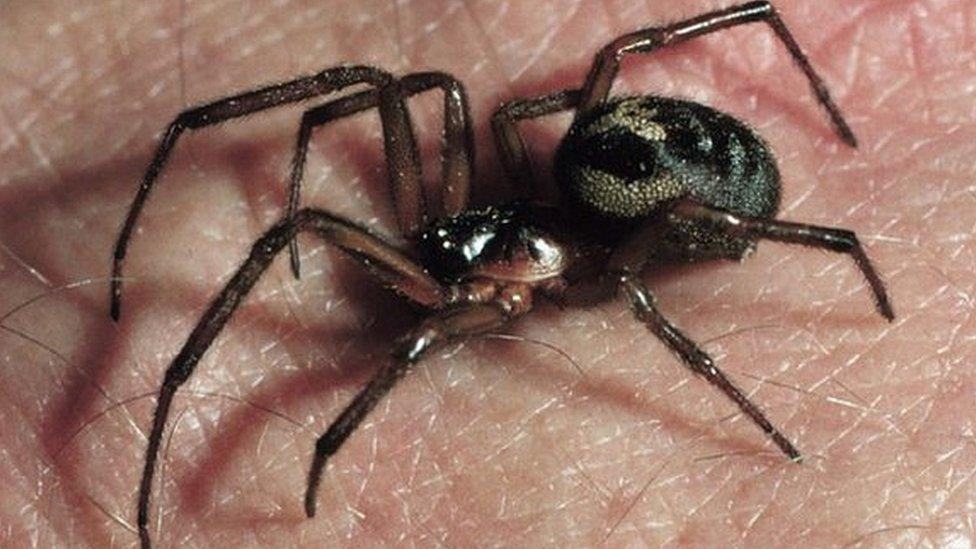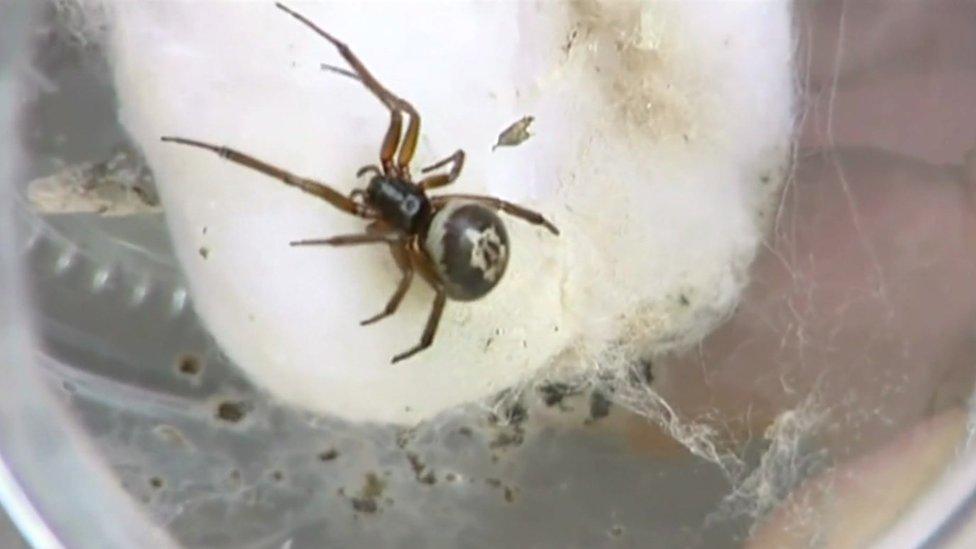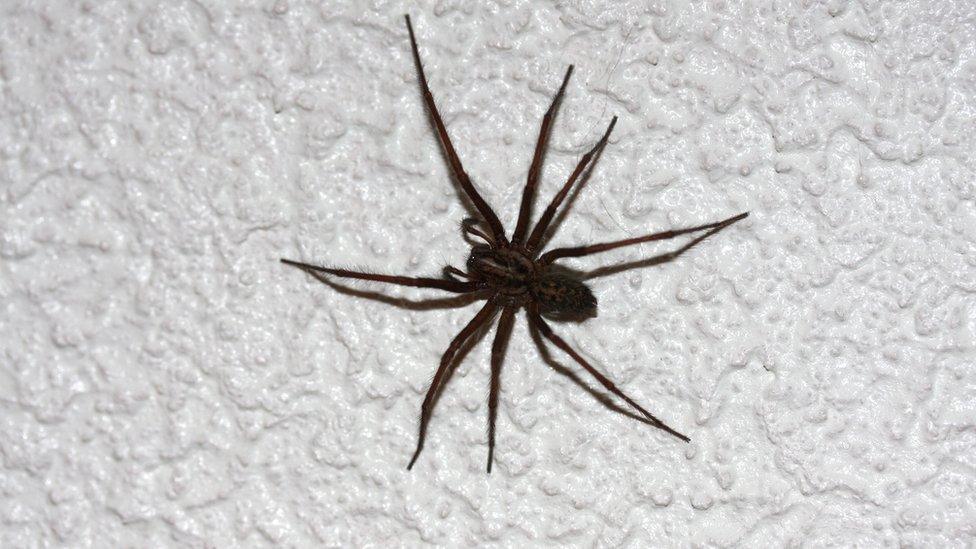False widow spiders close seventh London school
- Published

False widows are the most dangerous spider species in the UK
A seventh east London school has closed because of an infestation of false widow spiders.
Eastlea Community School in Canning Town announced it will shut on Wednesday until 29 October, after the half term holiday.
False widows are about the size of a 50p coin and are the most dangerous spider species in the UK.
Two other secondary schools and four primary schools, all in Newham, have closed for various amounts of time.
Thousands of children have been forced to miss up to a month of lessons because of the spider outbreaks, the Local Democracy Reporting Service reports.

Eastlea Community School will remain closed until after the half term holiday
The schools affected are:
Lister Community School, which is expected to remain shut until after half term
Rokeby School, which had expected to remain closed until half term but may now open on 15 October
Star Primary School, which is expected to remain shut until 15 October
Ellen Wilkinson Primary School, which is expected to fully reopen on 16 October
Monega Primary School, which has fully reopened apart from the nursery which will remain closed until 15 October
Earlham Primary, which closed for one day last week before being declared spider free
Several of the closed schools have arranged for some of their years to use facilities at nearby colleges while buildings are fumigated.
Work has also been set for pupils to do at home.
False widow infestations have been found at numerous locations across the affected schools, both inside and outside the school buildings.
Newham Council said head teachers "know their schools best and made their decisions [to close] because of the scale of problem in their school".
"We fully support their decision to stay open or to close and will work with head teachers to support their children," it added.

False widows - Britain's most venomous spider

There are reports of false widow spiders becoming uninvited houseguests in homes across the UK every autumn
False widow spiders arrived in south-west England in the 1870s
It is Britain's most venomous spider, although there are no reported deaths from its bite in the UK
The spider has distinctive cream markings on its bulbous body and is brown with reddish-orangey legs
It prefers warm, dark places and eats insects, invertebrates and other spiders
Source: Natural History Museum
- Published5 October 2018

- Published4 October 2018

- Published7 September 2018

- Published31 July 2018

- Published5 July 2017
